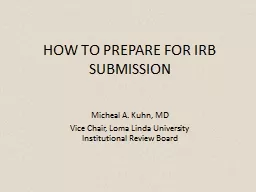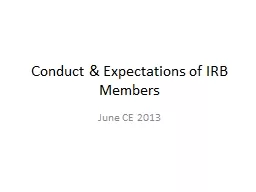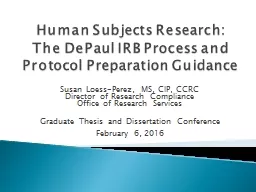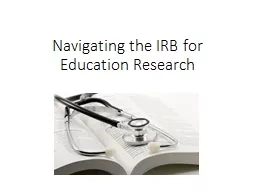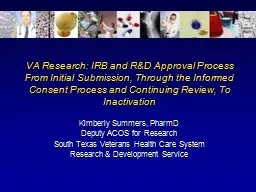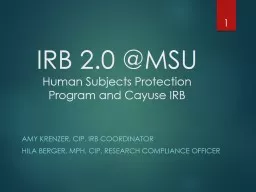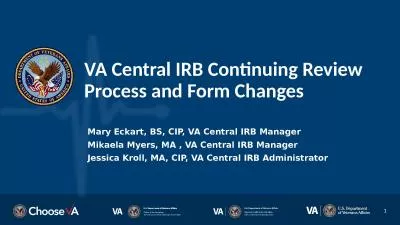PPT-HOW TO PREPARE FOR IRB SUBMISSION
Author : tatyana-admore | Published Date : 2017-03-20
Micheal A Kuhn MD Vice Chair Loma Linda University Institutional Review Board What type of research needs IRB review Anything and everything that involves human
Presentation Embed Code
Download Presentation
Download Presentation The PPT/PDF document "HOW TO PREPARE FOR IRB SUBMISSION" is the property of its rightful owner. Permission is granted to download and print the materials on this website for personal, non-commercial use only, and to display it on your personal computer provided you do not modify the materials and that you retain all copyright notices contained in the materials. By downloading content from our website, you accept the terms of this agreement.
HOW TO PREPARE FOR IRB SUBMISSION: Transcript
Download Rules Of Document
"HOW TO PREPARE FOR IRB SUBMISSION"The content belongs to its owner. You may download and print it for personal use, without modification, and keep all copyright notices. By downloading, you agree to these terms.
Related Documents

